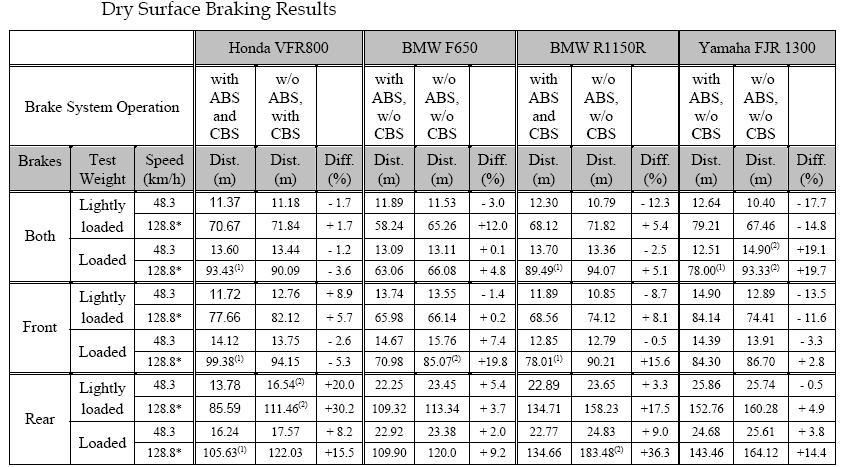Knifemaker
Not me
I remember reading a test simular to this awhile back, posted somewhere else, But it did help me in my decision to buy a FJR with ABS:
https://www.msf-usa.org/imsc/proceedings/a-...ingDistance.pdf
This is not the exact test I read, as the one I read they ran this test using 3 groups of riders, Expert-racers, long time riders, and new riders. I can not however find the link to this re-do of the above test.
The conclusions were the same, other than the fact that they did find that the "expert" riders could achieve better stopping distances on DRY roads without ABS. However, even the most expert rider on a non ABS bike could not out stop even a "new" rider on a ABS equiped bike when the conditions were wet or sandy.
And as most of the roads in this great country of ours are not perfectly dry or free of debris, the addition of ABS is pretty much a no brainer when it comes to options offered for a motorcycle.
If anyone can find the link to the test I am speaking of, let me know. ...
EDIT:
Here it is:
https://www.ibmwr.org/prodreview/abstests.html
(was found off Hycyles link)
KM
https://www.msf-usa.org/imsc/proceedings/a-...ingDistance.pdf
This is not the exact test I read, as the one I read they ran this test using 3 groups of riders, Expert-racers, long time riders, and new riders. I can not however find the link to this re-do of the above test.
The conclusions were the same, other than the fact that they did find that the "expert" riders could achieve better stopping distances on DRY roads without ABS. However, even the most expert rider on a non ABS bike could not out stop even a "new" rider on a ABS equiped bike when the conditions were wet or sandy.
And as most of the roads in this great country of ours are not perfectly dry or free of debris, the addition of ABS is pretty much a no brainer when it comes to options offered for a motorcycle.
If anyone can find the link to the test I am speaking of, let me know. ...
EDIT:
Here it is:
https://www.ibmwr.org/prodreview/abstests.html
(was found off Hycyles link)
KM
Last edited by a moderator:




